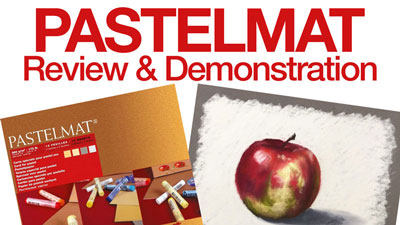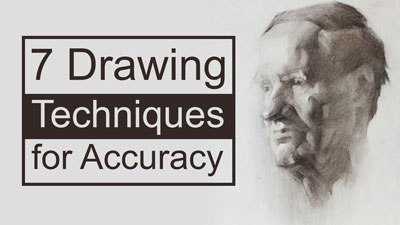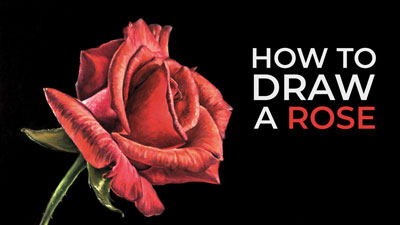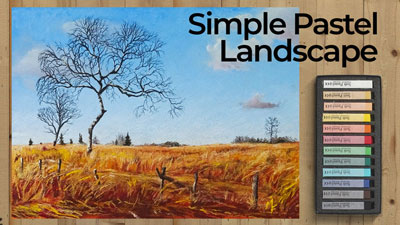Materials Used in This Lesson
Charcoal is applied in various forms in this drawing. Vine charcoal is used for the preliminary marks and blended into the surface to create the initial shapes of the forest. These initial shapes establish the relationship between the positive and negative space within the scene and help to define the focal point. Vine charcoal is easily blended, erased, and manipulated on the surface.
To increate the contrast and refine the locations of darker value, compressed charcoal is applied. Compressed charcoal is much darker than vine charcoal and is quite a bit harder to erase. A charcoal pencil is also used to draw the branches of the trees and add details.
With any charcoal drawing, erasing plays a role in the mark making. Vine charcoal is easily lifted or erased with a kneaded eraser. This allows the artist to work back and forth between darker and lighter values. Charcoal can be added and lifted until the right tone is found. For areas that require a bit more precision, an eraser pencil is used to remove the charcoal.
Blending stumps are used for blending areas within the drawing. While a finger can be used to smudge the charcoal in larger areas, a blending stump provides more control in areas that are more detailed. This is especially true around the edges of the trees where some variety of tone and texture are required to create the illusion of leaves.
The paper used in this lesson is Canson Mí Tièntes pastel paper. This surface provides a nice texture that accepts multiple charcoal applications.
More on charcoal drawing…
- Charcoal Drawing Lessons
- How to Draw a Portrait with Charcoal
- How to Draw an Old Tree with Charcoal and Sepia Tones
- How to Draw a Bird with Graphite and White Charcoal
A Quick Tip for Using Charcoal
Charcoal as a medium is most related to pastels. However, some folks approach charcoal drawing as they would graphite or colored pencils. Using the medium in this manner can often lead to frustration. While charcoal can be used with great precision, in most circumstances, it’s best to start with loose applications and gradually refine the details as the drawing progresses.
I like to compare charcoal drawing to working with clay. We start with a ball of clay and the more that we work with it in our hands, the more the clay begins to take the form of what we are creating. We start loose with clay and slowly define the details as we work with it. The same is true for charcoal drawing. We can start with broad, loose applications and define the basic shapes and composition with larger areas of tone. As we work the relationships of value, by adding charcoal and removing it with an eraser, we slowly start to develop the details. The details are almost pulled out of the drawing when we approach it this way.
If so, join over 36,000 others that receive our newsletter with new drawing and painting lessons. Plus, check out three of our course videos and ebooks for free.





